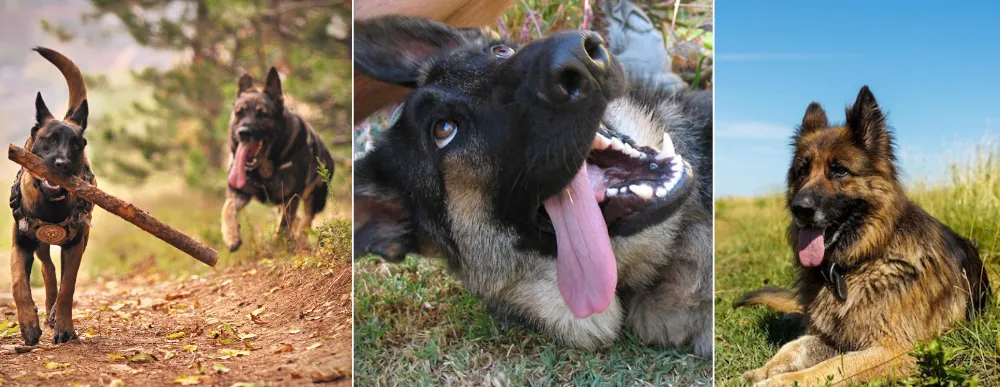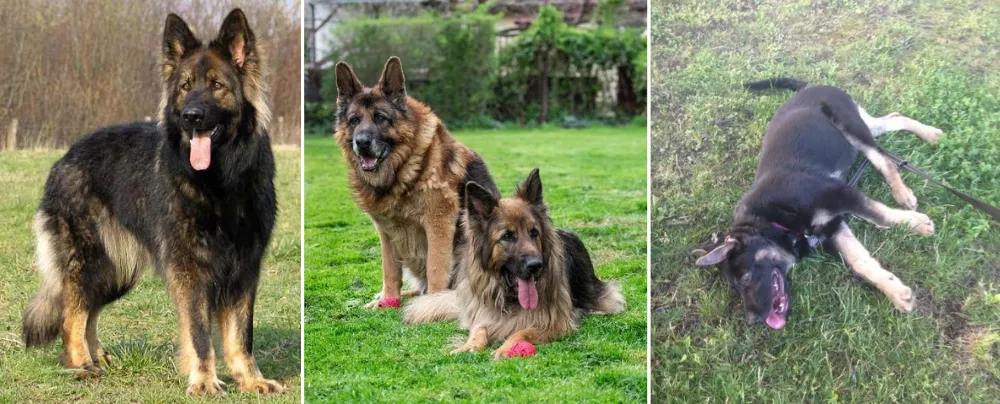Do you want to know how do German Shepherds handle the hot weather? You’re in the right place.
This guide explores heat tolerance in German Shepherds, effective cooling strategies, and tips for keeping your German Shepherd comfortable and safe in the heat.
Adaptability to hot weather can be a concern for many German Shepherd owners, especially in regions with consistently high temperatures. Understanding how German Shepherds handle hot weather is essential to ensure their well-being and comfort.
Topics
- German Shepherds and Their Coat
- Heat Tolerance in German Shepherds
- Breed Origins
- Ideal Temperatures for German Shepherds
- Physical Activity
- Age and Health
- Coat Color
- Signs of Overheating
- Tips to Help German Shepherds Stay Cool
- When to Seek Veterinary Help
- Conclusion
|| DON’T MISS! Today’s Deals on Chewy – Pet Foods, Products, Supplies, Toys and more…
01. German Shepherds and Their Coat
The German Shepherd’s double coat is one of its defining features. This coat consists of a dense undercoat and a harsher outer coat, designed to protect the dog from both cold and heat.
While this might seem counterintuitive, the double coat actually acts as insulation, helping to regulate body temperature by keeping cool air close to the skin during hot weather. However, this natural defense has its limits, particularly in extreme heat.
Understand The German Shepherd Coat Types In Detail:

02. Heat Tolerance in German Shepherds
Below are some of the important factors that help you to understand heat tolerance in German Shepherds.
2.1 Breed Origins
German Shepherds were originally bred in Germany, a country with a temperate climate. Germany experiences a range of temperatures throughout the year, with average highs between 3.5°C in January and 22.6°C in July, and average lows between -1.6°C in January and 13.1°C in July.
While German Shepherds can tolerate moderate heat, they are not naturally adapted to extremely hot environments, as discussed in the next section.

RELATED
- 5 Different Types Of German Shepherd Breeds & Their Features
- In What Ways German Shepherds Are Similar to Wolves?
- Are German Shepherds Descendants of Wolves?
- How Slant (Sloped) Back German Shepherds Were Created?
- How to Tell if German Shepherd Feels Comfortable Around You
2.2 Ideal Temperatures for German Shepherds
German Shepherds are most comfortable in temperatures ranging from 50°F to 70°F (10°C to 21°C). While they can tolerate warmer conditions with proper care, prolonged exposure to temperatures above 85°F (29°C) can pose risks, especially without adequate cooling measures.
Different coat types (Stock Coat, Plush Coat, and Long Coat) may experience slight variations in heat tolerance. For example, Long Coat German Shepherds may feel the effects of heat more intensely due to their thicker and denser fur, necessitating extra cooling measures during the hot weather.

2.3 Physical Activity
German Shepherds are active and energetic dogs, and excessive physical exertion in hot weather can quickly lead to overheating or heatstroke.
| Heatstroke is a life-threatening condition caused by prolonged exposure to high temperatures, leading to the body overheating and failing to cool down. Symptoms include confusion, rapid heartbeat, nausea, and a body temperature above 104°F (40°C). |

RELATED
- German Shepherd Energy Levels by Age | Activity Needs
- Understanding the Prey Drive of German Shepherds
- German Shepherd Running Abilities: Speed, Distance, Endurance
- Ultimate Guide to German Shepherds Water Activities
- How to Give German Shepherd a Bath: A Complete Guide
2.4 Age and Health
Puppies, senior dogs, and those with underlying health conditions are more susceptible to heat-related stress compared to healthy adult dogs.

RELATED
- At What Age German Shepherds Slow Down?
- How to Extend the Lifespan of German Shepherd
- Degenerative Myelopathy in German Shepherds | Causes & Prevention
- Hip Dysplasia in German Shepherds | Causes & Prevention
- German Shepherd Teeth Problems: Causes, Prevention, Treatment
2.5 Coat Color
Dark-colored German Shepherds, such as those with black or sable coats, absorb more heat than lighter-colored ones, making them more vulnerable in direct sunlight.

RELATED
- German Shepherd Coat Color Patterns and Variations
- How Does Selective Breeding Affect Dog’s Appearance
- Should You Shave a German Shepherd in Summer?
03. Signs of Overheating
German Shepherd owners should be vigilant for signs of heat-related distress, including:
- Excessive panting or drooling
- Lethargy or weakness
- Rapid heartbeat
- Vomiting or diarrhea
- Disorientation
- Bright red or pale gums
If any of these symptoms occur, immediate cooling measures and veterinary attention are crucial.
| Drooling in dogs is the excessive flow of saliva from their mouth, often normal during eating or excitement. However, excessive drooling can indicate dental issues, nausea, or other health concerns. |

04. Tips to Help German Shepherds Stay Cool
Ensure your dog has access to shaded areas and well-ventilated spaces, especially during peak heat hours.
Always provide fresh, cool water. Consider using a pet-safe water fountain to encourage hydration.
Schedule walks and playtime during cooler parts of the day, such as early morning or late evening.
RELATED
- Best Way to Take German Shepherd for Walk: A Complete Guide
- Regular or Retractable Leash! Best for German Shepherds?
Use cooling mats, vests, or bandanas specifically designed for dogs.
Regularly brush your German Shepherd to remove loose hair and prevent matting, which can trap heat. Never shave their coat, as this disrupts their natural temperature regulation.
RELATED
- Common Mistakes to Avoid When Grooming a German Shepherd
- What Health Products Should Every German Shepherd Owner Have?
Avoid hot surfaces like pavement and sand which can become extremely hot and may burn your dog’s paw pads. Test surfaces with your hand before allowing your dog to walk on them.
Keep your home or dog’s place cool with fans or air conditioning. A tiled or shaded area indoors can offer a comfortable resting spot for your dog.
05. When to Seek Veterinary Help
If your German Shepherd shows signs of severe heatstroke such as collapse, unresponsiveness, or seizures seek emergency veterinary care immediately. Heatstroke can be life-threatening if not addressed promptly.

06. Conclusion
While German Shepherds can handle moderate heat with proper care, they are not immune to the dangers of hot weather. By understanding their needs and taking proactive measures, you can ensure your German Shepherd stays safe, healthy, and comfortable even during the hottest months.
If you like this post then don’t forget to share with others. Share your feedback in the comments section below.




Leave a Reply